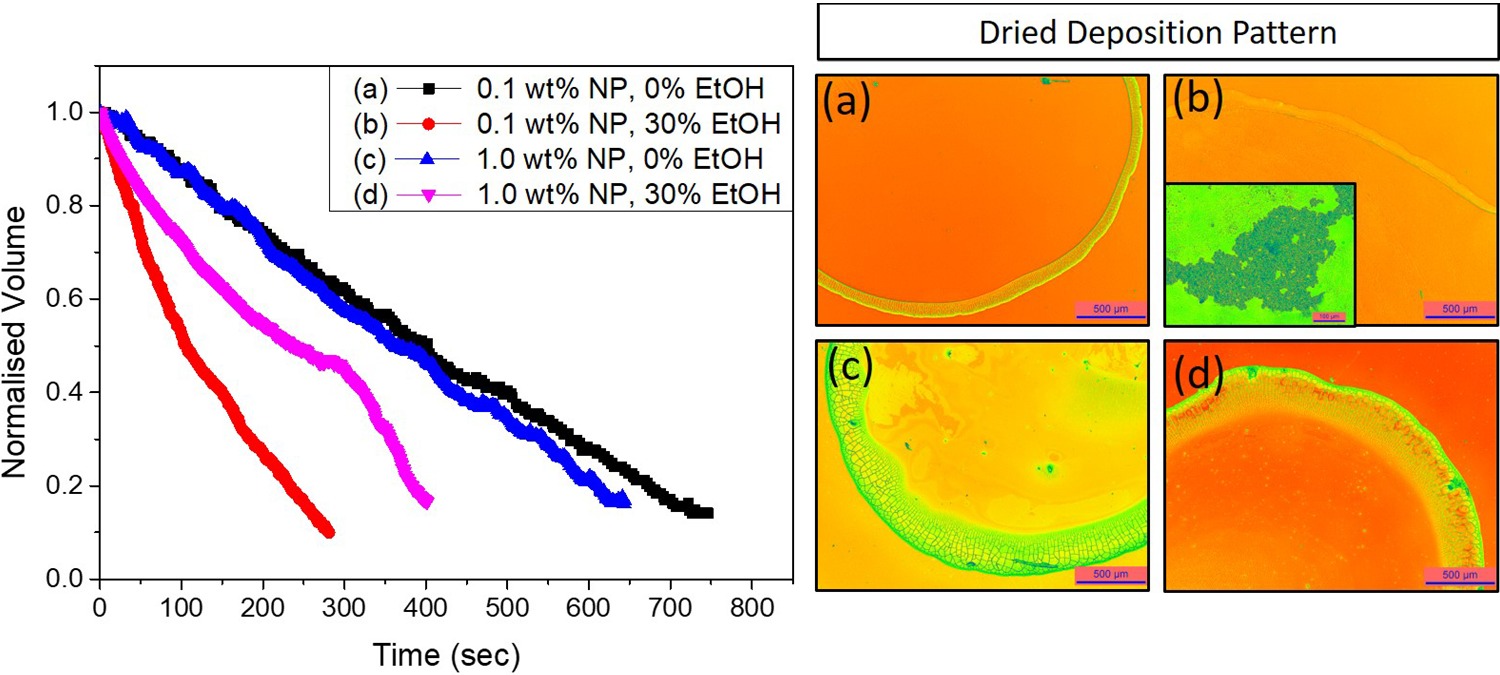https://doi.org/10.1140/epje/s10189-021-00045-6
Regular Article - Soft Matter
Interconnected drying phenomena in nanoparticle laden water-ethanol binary droplets
Department of Physics, Indian Institute of Technology Ropar, Nangal Road, 140001, Rupnagar, Punjab, India
Received:
2
August
2020
Accepted:
23
February
2021
Published online:
19
March
2021
Understanding the evaporation of a multi-component droplet has found immense importance in various technological applications. This study investigates the evaporation behaviour of a colloidal binary droplet system comprising of the ethanol-water mixture and polystyrene nanoparticles. The wetting and evaporation dynamics were studied with an emphasis on the collective influence of ethanol and nanoparticle concentrations. The temporal behaviour of the contact angles, shapes and volumes of the droplets was monitored in order to analyse the evaporative behaviour. With increase of ethanol concentrations, the binary droplet volumes were found to decrease nonlinearly with time. Ethanol being more volatile evaporated in the initial stage. Towards the end of the evaporation process, the evaporation characteristics mimics the behaviour of pure water. Our study shows that the initial contact angle decreases monotonically with increased concentration of ethanol in the mixture. The contact angle is maximum for a particular nanoparticle concentration. Droplets with higher ethanol concentration show higher wettability which in its turn is maximum for low nanoparticle concentrations. This trend shows the interconnected effect of ethanol and nanoparticle concentrations on evaporation. Rim width of the final deposition pattern increases with nanoparticle concentration although it is almost independent of ethanol concentration. Finally, it is noticed that fast evaporation of a relatively more volatile component in a binary mixture droplet leads to nanoparticle segregation for low nanoparticle concentrations. Thus for binary mixtures, the evaporation of the more volatile component, ethanol for our case, offers characteristic differences in the resulting evaporation dynamics from that of pure water which finds applicability for multi-component evaporation processes.
Versha and Deepa Lohani have contributed equally to this work.
Supplementary Information The online version contains supplementary material available at https://doi.org/10.1140/epje/s10189-021-00045-6.
© The Author(s), under exclusive licence to EDP Sciences, SIF and Springer-Verlag GmbH Germany, part of Springer Nature 2021





